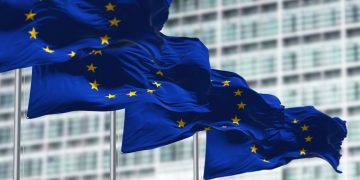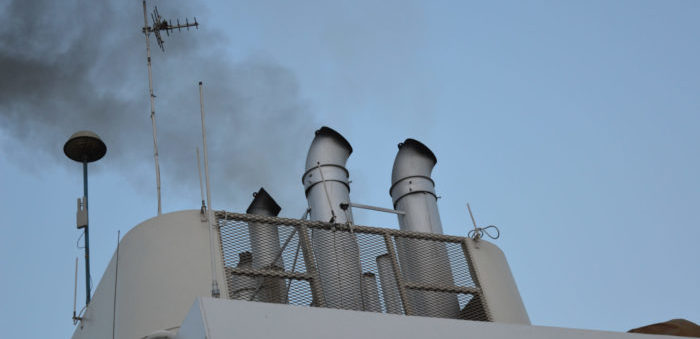The second guide of IMO’s “Port Emissions Toolkits’ is intended to serve as a resource guide for ports intending to develop an emissions reduction strategy (ERS) for port-related emissions sources. The guide builds on the principles discussed in Guide No.1 and describes the methods that can be used by ports to implement voluntary emissions control measures that go beyond regulatory requirements.
-
- Conducting an assessment of port emissions
- Steps for ports to develop an emissions reduction plan
- Guidance to create an emissions reduction policy
- Incorporating MARPOL Annex VI into national law
The Ship and Port Emissions Toolkits have been developed under the GEF-UNDP-IMO Global Maritime Energy Efficiency Partnerships (GloMEEP) Project, in collaboration with its strategic partners, IMarEST and IAPH.
The guide cited the following steps for developing an emissions reduction strategies plan:
1. Build support:
All successful environmental projects and programmes have at least one thing in common: support from institutional leadership.
Development of an ERS plan will require port resources, including staff time across various departments and, depending on the scope, funding for external analytical and consulting work. Working with other stakeholders interested in reducing emissions, such as pollution control agencies, non-governmental organisations, community groups and trade organisations, is essential to build necessary support for the project.
Additionally, engagement with privately owned companies that operate in the port area, in particular shipping lines and terminal operators, is critical, as most ports do not have direct control over these operations.
2. Determine pollutants to be reduced:
It is important to clearly identify the pollutants to be targeted by the ERS plan. The focus of the ERS could be one air pollutant or several. In cases where multiple pollutants are targeted, the development of a pollutant hierarchy will be helpful, as not all emissions reduction strategies will reduce all pollutants, and some strategies may reduce one pollutant while increasing another.
3. Set pollutant reduction goals
An ERS plan should include emissions reduction objectives and targets. These are the goals the plan strives to achieve. These should be targets that can be tracked and measured. In cases where the goals are set based on the use of emerging and not yet proven technologies, it may be helpful to set interim targets to help measure the progress and status of the emerging technology. A target may be set for one or more of the pollutants.
A key consideration in goal setting is the feasibility of technological and operational changes, as well as the availability of funding to make the required investments. Failure to properly consider these elements can impede successful implementation of the ERS. Often it is tempting to set over-ambitious goals with the intention of sending a signal to encourage private investment in technology development.
This approach is usually only successful if the port has a dominant market position and provides significant funding for the development and demonstration of technologies. Another key consideration is the scope of operations the goals are meant to target. Most ports do not own or operate the majority of emissions sources, instead leasing facilities to private operators. Third parties almost always control seagoing vessels.
4. Review programmes implemented by others
Understanding port-related emissions sources and their operational profiles is key to the evaluation of potential emissions control measures for inclusion in an ERS plan. A detailed emissions inventory is one of the best ways to gain understanding of both emissions sources and their operations.
With the pollutants selected and a hierarchy set, review of the emissions inventory leads to the identification of the equipment and vessels that are significant contributors to either total or individual source category emissions. Key information that should be reviewed from the emissions inventory include, but are not limited to:
- Emissions source categories and types
- Energy consumption
- Engine age
- Engine size and technology
- Fuel types
- Population
- Data on the owner/operator of each emissions source
- Residence time at port.
5. Evaluate emissions inventory data
Once the pollutant priorities are identified and goals are set, it is advantageous to evaluate the work of other ports, particularly those that have addressed similar pollution problems. In addition to reviewing other port emissions reduction programmes that are publicly available, it is strongly recommended that outreach be made to find other ports that may be undertaking an ERS that may not yet be public.
6. Identify and assess candidate control measures
Once the preceding steps have taken place, the identification and assessment of candidate emissions control measures can begin. This is where the specific control measures for the ERS plan are developed.
Candidate measures should be assessed and ranked based on the priorities set by the port authority. This ranking of candidate measures is essential to ensure that the allocated resources achieve the ERS goals. Determining how to rank measures is port-specific. Considerations include:
- air pollutants targeted by the measure;
- co-benefit of reducing air pollutant and GHG emissions;
- proximity of the port to population centres;
- cost of implementing each strategy;
- commercial availability of the technology;
- equipment maintenance;
- acceptability by stakeholders;
- administrative burden; and
- implementation timeline.
Once ranked, the port can then implement those candidate measures that best meet the emissions reduction goals of the ERS. This allows the port to establish a multi-year budget for funding selected measures and to ensure that finite resources are not wasted on efforts that will not meet the ERS goals.
7. Develop an implementation approach
There are a number of implementation considerations to track when developing an ERS plan. The port will need to evaluate the implementation approaches available to it, and will have to determine the best fit for each emissions control measure in the ERS. Issues to consider when developing the implementation approach for an individual emissions control measure include:
- Claims of technology vendors
- Administrative approach
- Coordination and collaboration with stakeholders
- Evaluating cost effectiveness
- Modelling, monitoring and reporting
- Review and adjustment cycles
Further details may be found herebelow:































































